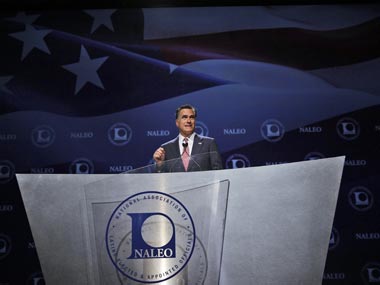Today is the 50th day since Prime Minister Narendra Modi **demonetised the old Rs 500 and Rs 1,000 notes** . Over the last 50 days, we have seen a **complete shakeup** as far as daily transactions, cash withdrawals and deposits, digital transactions are concerned. One common sight over these 50 days has been those lengthy queues outside working ATMs and ‘Out Of Cash’ signs on ATMs that are not working. According to a report in Mint, the majority of the ATMs in the country are in a predominantly defunct state. Thanks to the different size of the Rs 500 and Rs 2,000 notes, all the ATMs had to be recalibrated. Now while the calibration is complete, there is still a cash crunch as far as the new currency is concerned. CMS Infosystems manages ATMs for around 55,000 out of the 200,000 ATMs in the country, covering around 92 percent districts across India. Before demonetisation, CMS representatives used to visit close to 30,000 ATMs on a daily basis to top up cash, but post demonetisation, the peak daily visits has dropped to just 13,000 ATMs. On an average that number is closer to 11,000 ATMs across the country. According to the Mint report, the average cash deposits in ATMs fell from Rs 1,582 cr to Rs 455 cr, that’s a 71 percent drop. On-ground situation “An overall cash crunch seems to be the main cause for this. Other than that, there is a focus to divert the cash to bank branches rather than to ATM networks. So earlier the majority of the currency disbursement would happen through the network — it’s larger, it’s automated and works 24 hours, it also reached areas where there may not have been a branch. For now, it’s completely the other way round,” said Sandhya Menon, company spokesperson for CMS Infosystems in a conversation with Tech2. According to her, there have been ATMs which have not been refilled even once since demonetisation due to the changed cash dynamics. That number used to be around 7 percent before demonetisation, but had peaked to around 50 percent in the first week of December. [caption id=“attachment_354310” align=“aligncenter” width=“640”]  Image: Reuters[/caption] “The new Rs 500 currency is almost negligible (as compared to Rs 2,000) since we have not been getting a lot of it. It has certainly increased in number now, and we have seen an uptick since the second week of December. Hopefully, it will increase over time, but I do not have the stats on that at the moment,” said Menon. Cash disbursal in ATM happens through cassette trays which hold the cash. Initially, post demonetisation, the breakup was to have one tray for Rs 100 notes, one for Rs 1,000 and two for Rs 500 notes. As the new notes have different dimensions, the trays had to undergo recalibration as well. The capacity of each tray is to hold up to 2,500 notes, but in order to not pack it completely, to not make it too tight, the ATMs cassette trays are filled with up to 2,000 notes. “Post demonetisation, we evacuated all the old notes and we were only filling one of the trays with Rs 100 notes. The reason being, the other three were not calibrated for the new notes. Keeping the limit of Rs 2,000 in mind then, the ATMs would get empty after just 100 transactions,” says Menon. RBI had then set up a taskforce to calibrate the machines to take in the new currency notes. This involves coordination between multiple agencies such as National Payments Council of India (NPCI), banks involved, as well as agencies such as CMS doing that. Currently, all the ATMs have been recalibrated. The shortage of money in ATMs is not due to lack of machines, but because the currency isn’t there, says Menon. CMS Infosystems tried to ensure that ATMs that ran out of cash were filled up soon, but in the initial days post demonetisation, filling up a single ATM could easily take up 2-3 hours says Menon. Before demonetisation, the frequency was to top up the ATMs with cash every 2-3 days. Rise of Micro-ATMs **Micro-ATMs** have suddenly become a buzzword post demonetisation. We have heard of shopping malls such as Big Bazaar setting up micro ATMs to help customers withdraw money, even corporate offices have had micro ATM counters through banks to help professionals withdraw money. “Places like Big Bazaar distributing cash via ATMs was like them becoming a separate agency to help in cash disbursement as a creative solution in our times,” says Menon. Speaking on trends that emerged Menon said that increase in digital transactions numbers was the big story. So would this push towards cashless society mean less frequent ATM machine top ups for agencies such as CMS Infosystems? Menon said that it would be too early to say that and CMS Infosystems is also looking at how this will play out. Cash-driven and cashless should co-exist “We have always believed that there needs to be co-existence of cash-driven and cashless modes of transactions. At the same time, ATMs need to be given importance as it eases a lot of the things that a branch can do. It’s almost a branch equivalent in many aspects,” says Menon highlighting the fact that our visit to the banks for many tasks has come down due to ATMs. Considering the state of infrastructure we currently have, it would be quite premature to say that ATM machines would not be needed in the near future. Things such as POS machines, internet, the **state of security** as far as digital transactions are concerned mean that shift to digital will surely take more time.
There have been ATMs which have not been refilled even once since demonetisation due to the changed cash dynamics
Advertisement
End of Article


)
)
)
)
)
)
)
)
)



